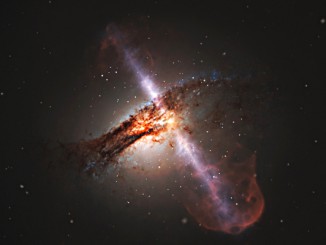
John J. Tobin, professor of astrophysics in the Homer L. Dodge Department of Physics and Astronomy, OU College of Arts and Sciences, led a global team of researchers who demonstrated that the disc surrounding the tri-star system appeared susceptible to disc fragmentation. Team members represented Leiden University, The Netherlands; University of Arizona; Chalmers University of Technology, Onsala Sweden; University of Illinois; SUNY Fredonia; University of Virginia; National Radio Astronomy Observatory, New Mexico; Max-Planck, Germany; and University of California, San Diego. Their research has just been published in the journal Nature.
“What is important is that we discovered that companion stars can form in disc material surrounding a dominant star,” said Tobin. “We had observed this system in the past with ALMA’s predecessors, but this is the first time we have been able to clearly analyse the disc and the newborn stars within it. ALMA revealed the spiral arms and disc that led to the formation of the tri-star system. Triple systems like this one are rare, and this is the only one with a configuration like this, but we are actively searching for more.”
How binary stars form has been a mystery for some time, and there are different theories about how they form — one is the fragmentation of the disc around the stars that are forming. Tobin explains the formation of the disc in which the tri-star system is forming is like a figure skater doing a spin and pulls his or her arms in to gather speed. A star initially forms from a cloud of interstellar gas that is collapsing under its own gravity. The spin from the cloud causes a disc to form as the material spins faster and falls toward the star. If the disc happens to have enough material, spiral arms form and the disc can fragment to another star.



